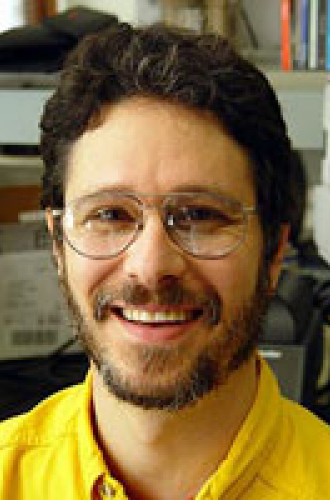-

-
Craig R Linder
Associate Professor
Department of Integrative Biologyrlinder@austin.utexas.edu
Phone: 512-471-7825
Office Location
BIO 204
Postal Address
205 W 24TH ST
AUSTIN, TX 78712-
Research Summary:
My research focuses on three areas: the evolution of complex character traits in a phylogenetic context, the genetic architecture of species, and genetic maternal effects in seeds. I use modern molecular techniques, computer modeling, and traditional experimental approaches. My primary work is the evolution of angiosperm seed-oil composition. I study the selective forces that have generated the wide variety of oil in seeds, especially the balance between saturated and unsaturated oils. I am also involved in a project with Dr. Loren Rieseberg of Indiana University to develop simulation models that test how different levels and types of selection affect the genetic architecture of hybrids and populations experiencing introgression. Finally, I am using Brassica rapa (a wild mustard) as a model system to test how maternal effects influence the fitness and performance of seeds. Students interested in working with me need not work on the same organisms or issues that I do. I encourage independent and original thought, so I am open to almost any project within my areas of expertise.
-
2000 Linder, C.R., L.R. Goertzen, B. Vanden Heuvel, J. Francisco-Ortega, R.K. Jansen., The external transcribed spacer of the rDNA repeat: a new nuclear region for low-level taxonomic analysis of the Asteraceae and closely allied families., Molecular Phylogenetics and Evolution 14: 285-303
2000 Linder, C.R., Evolution and adaptive significance of the balance between saturated and unsaturated seed oils in angiosperms., The American Naturalist 156: 442-458
2000 Ackerly, D.D., S.A. Dudley, S.E. Sultan, J. Schmitt, J.S. Coleman, C.R. Linder, D.R. Sandquist, M.A. Geber, A.S. Evans, T. Dawson, and M.J. Lechowicz, The evolution of plant physiological traits: recent advances and future directions, BioScience 50: 979-995
2000 Linder, C.R., Moore, L.A., and Jackson, R.B., A universally applicable molecular method for identifying most underground plant parts to species., Molecular Ecology 9: 1549-1559
1999 Rieseberg, L.H. and C.R. Linder., Hybrid classification: insights from genetic map-based studies of experimental hybrids., Ecology 80: 361-370
1999 Jackson, R.B., L.A. Moore, W.H. Hoffman, W.T. Pockman, and C.R. Linder. , Ecosystem rooting depth determined with caves and DNA., Proceedings of the National Academy of Sciences, USA 96: 11387-11392
1999 Kimura, S., W. Laosinchai, T. Itoh, X. Cui., C.R. Linder, and R.M. Brown Jr., Immunogold labeling of rosette terminal cellulose synthesizing complexes in a vascular plant (Vigna angularis)., The Plant Cell 11: 2075-2086
1998 Linder, C.R., I. Taha, G.J. Seiler, A. Snow, and L.H. Rieseberg. , Long-term introgression of crop genes into wild sunflower populations., Theoretical and Applied Genetics 96: 33347
1998 Schilling, E.E., C.R. Linder, R. Noyes, and L.H. Rieseberg., Phylogenetic relationships in Helianthus (Asteraceae) based on nuclear ribosomal DNA internal transcribed spacer region sequence data., Systematic Botany 23: 177-187
1998 Linder, C.R., Potential persistence of escaped transgenes: seed germination and dormancy in transgenic canola and wild x canola hybrids., Ecological Applications 8: 1180-1195
-














